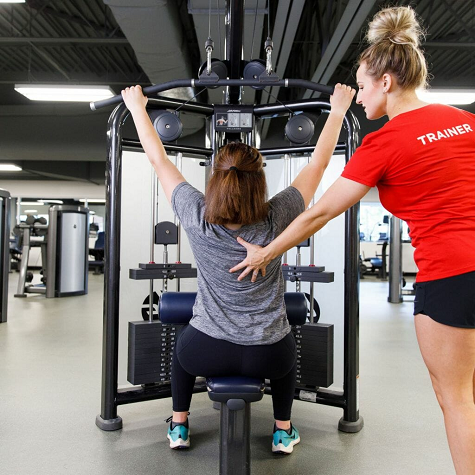Unit 7: Personal Fitness Program
Unit 7: Personal Fitness Program

Unit 7: Personal Fitness Program

Unit 7: Personal Fitness Program
This unit describes cardiovascular fitness and the importance it plays in our lives. Students will learn that the heart is the most important muscle in our body. They will also discover that cardiovascular fitness is the key to all fitness programs.
Fitness: The definition of physical fitness might vary by individual but most experts agree that there are five basic components of physical fitness which involve your heart, lungs, strength, endurance, and agility or flexibility.
There are five basic components of physical fitness. These include cardiorespiratory or aerobic endurance, muscular endurance, muscular strength,flexibility, and body composition.
Below we explain each of the five.
1. Cardiorespiratory or Aerobic Endurance
The ability to do moderately strenuous activity over a period of time. It reflects how well your heart and lungs work together to supply oxygen to your body during exertion and exercise. Also called aerobic fitness.
2. Muscular Endurance
The ability to hold a particular position for a sustained period of time or repeat a movement many times. This could be the capability required to hold a two-pound weight above your head for five minutes or the effort required to lift that weight 20 consecutive times.
3. Muscular Strength
The ability to exert maximum force, such as lifting the heaviest weight you can budge, one time. It is possible to have muscular strength in one area, say your arms, while lacking strength in another area such as your legs.
4. Flexibility
The ability to move a joint through its full range of motion; the elasticity of the muscle. This is how limber or supple you are.
5. Body Composition
The proportion of fat in your body compared to your bone and muscle. It does not refer to your weight in pounds or your figure.
In short, physical fitness is endurance; physical fitness is flexibility, physical fitness is endurance; physical fitness is cardiovascular fitness; physical fitness is proper body fat ratios; physical fitness is muscular strength.
Unit Focus
- The cardiovascular system and how it works
- Benefits of aerobic and anaerobic exercise
- Cardiovascular diseases and risk factors of heart disease
- Measuring cardiovascular fitness and heart rate
- Training principles which improve cardiovascular fitness
- Determining exercise levels
- Guidelines for safe aerobic exercises
- Types of aerobic exercises
Vocabulary
Lesson Reading

